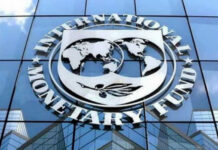
Bangladesh’s apparel industry is struggling to graduate to a producer of high-end items despite being in the business for four decades and one of the top suppliers globally, missing out on the opportunity to receive premium prices from international retailers and brands.
The multi-billion-dollar industry, which contributes about 85 per cent to the national export, has embraced a lot of reforms since the 1980s. Still, investment has been less in the production of value-added garment items.
As a result, Bangladesh has remained a prominent manufacturer of basic or semi-high-end garment items.
On the other hand, countries such as China, India and Vietnam have made the transition and are benefiting from the premium prices from the sales of value-added garment items to international retailers and brands.
Vietnam, which made the foray into the fashion business after Bangladesh, has become a major player in the global high-end garment segment because of investment in research and development in design and product quality.
Ahsan H Mansur, executive director of the Policy Research Institute of Bangladesh, said production of high-end garment items requires man-made fibres, in which Bangladesh is still very weak.
Bangladesh is strong in the manufacturing of garments from cotton fibre. Nearly 80 per cent of garment items in Bangladesh are manufactured from cotton fibre.
However, the demand for cotton fibre-made garment items is declining worldwide. For instance, almost all the sportswear fashion items come from artificial fibre.
The demand for sportswear items is on the rise globally both for sports purposes and fashion purposes, Mansur said.
Although it is difficult to quantify the high-end garment items exported from Bangladesh, industry insiders say its share is more than 30 per cent.
However, not all of them are high-end; they include semi-high-end garment items as well.
“Fast fashion is not a barrier at all; rather entertainment-related social restrictions discourage high-end buyers from visiting Bangladesh,” said KM Rezaul Hasanat, chairman and CEO of Viyellatex Group, a major exporter of value-added garments.
Fast fashion can be defined as cheap, trendy clothing that samples ideas from the catwalk or celebrity culture and turns them into garments in high street stores at breakneck speed.
“Big clients need big initiatives, which Bangladesh is lacking,” Hasanat said.
He said around 40 per cent of the total garment exported from the country is value-added items.
Sharif Zahir, managing director of Ananta Group Ltd, another exporter of high-end garments, is exporting denim jeans, suits and lingerie as
high-end products.
“The demand is good, but it takes a few years to make a profit from a factory of high-end products,” he said, adding that he had not been able to make a profit even after three years of exports from the high-end garment factory.
“However, I am expecting a good profit soon,” said Zahir.
Of his total exports, 20 per cent is high-end, 50 per cent is medium, and the rest is basic items.
“Production of high-end garment items is a very complicated process,” he added.
About 80 per cent of the garment exports fall within the price range of $15 per kilogram, and only 20 per cent items get a price more than $15 and a tiny fraction gets $35, according to research by the Bangladesh Garment Manufacturers and Exporters Association (BGMEA).
Contrary to adding higher values, the trend suggests that Bangladesh has lost 1.79 per cent unit value of the garment exported in the last five years.
Though it is difficult to capture the trend for the product range above $15 per unit, this may be generalised that Bangladesh’s progress towards adding higher values has been slow, the research said.
There have been some significant disconnect that limit the industry’s potential to expand over high street fashion, the BGMEA said.
The profile of the industry shows that it is mostly a volume-driven industry having a little presence of small and medium enterprises to tap into the niche market.
“Lack of innovative capabilities in the area of designing and product development and expertise, skills and technologies, and limited diversification in the area of non-cotton area are some of the major roadblocks to enhance our presence in the high-end segment of the global fashion market.”
The narrative of the industry has to change to be able to tap the high-end market, said the BGMEA.
“We have opportunities in the EU and the US, as well as in emerging Asian markets that include Japan, China, India, and Korea, and other regions like Russia and Australia,” said Rubana Huq, president of the BGMEA.
Huq said it could not be measured by averaging the value of garments since products differ from one from another in terms of materials used, finishes, trims, and other embellishments.
China has achieved excellence in all the segments of the global fashion market, and Vietnam, being heavily invested in backward and forward linkages by external investors, has also moved forward in terms of value addition than Bangladesh, she said.









